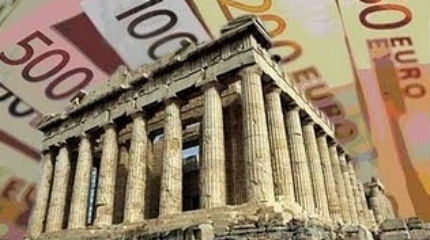By Hugo Nixon, New York Times
How unsustainable are Greece’s borrowings? This question has moved center stage after the eurozone agreed last Friday to lend Athens up to 86 billion euros, or more than $95 billion, in a new bailout program.
The eurozone is eager for the International Monetary Fund to also lend money in the bailout. But the I.M.F. thinks Greece’s debt is unsustainable and won’t provide more loans unless the eurozone gives Athens relief on its existing borrowings. The snag is that several eurozone countries, including Germany, are reluctant to cut the debt burden.
This isn’t something that ought to scuttle the deal. The eurozone has agreed to proceed without the I.M.F., in the hope that the I.M.F. will join in later. The eurozone will consider debt relief after the first review of the new bailout, which could be as soon as October. But the eurozone won’t agree to a haircut, or reduction, to the face value of the debt.
So there should be the basis for an agreement. This would involve giving Greece longer both before it starts repaying its debt and before it needs to finish the job. But the devil will be in the details, in particular in the measuring of debt sustainability.
The traditional approach, looking at ratios of debt to gross domestic product, is not suitable for Greece because the eurozone loans already have long grace and repayment periods, as well as extremely low interest rates. A crude debt-to-G.D.P. ratio — which, in Greece’s case, is expected by both the eurozone and I.M.F. to peak at about 200 percent — doesn’t take any account of these benefits.
An alternative would be to look at the present value of Athens’ debt — what its total future debt payments will be worth in today’s money. The European Stability Mechanism, the eurozone’s bailout fund, says that all the concessions so far given to Greece have reduced the present value by the equivalent of 49 percent of G.D.P. If one subtracted that from the headline ratio — assuming, for simplicity, that all the other debt is kept at face value — one would be left with 150 percent of G.D.P.
One can also calculate the present value of the €86 billion in new loans, which will pay interest at only 1 percent and have an average maturity of 32.5 years. The present value of that loan package is about half its face value.
By giving Athens such generous terms, the eurozone has already given it further debt relief of about €40 billion. Subtract that, and Greece’s borrowings would be under 130 percent of G.D.P. — still high but not out of line with those of other indebted European countries, such as Italy.
But it is also important to look at other yardsticks. The one increasingly favored by both the I.M.F. and the eurozone is gross financing needs. This measures how much a country needs to find each year to pay interest and repay debt as a percentage of its G.D.P. It looks at a government’s debt burden from a cash-flow perspective.
The I.M.F. says a country like Greece shouldn’t have financing needs above 15 percent, but in fact its needs are projected at more than that. Again this is useful but not enough on its own.
Advertisement
Continue reading the main story
Advertisement
Continue reading the main story
The I.M.F. is implicitly treating Greece as an emerging market. Although this is reasonable in the midst of the current crisis, it may not be the right way of looking at the country in the future. After all, if the bailout works, Greece will eventually become a reasonably advanced economy and may then be able to support higher financing needs a decade or so from now.
Another problem is that if the I.M.F.’s numbers are correct, other countries may need debt relief.
Figuring by gross financing needs also lumps interest and debt repayments together. This is too crude. After all, a country that just needs to refinance its debt will find it easier to raise funds in the market than one that needs to borrow to pay interest. This is why it is also important to look at a government’s interest payments as a percentage of G.D.P. By this yardstick, Greece doesn’t look too bad, because its debt has low rates. It has to find 4 percent of G.D.P. to service its borrowings, less than the 5 percent that Italy and Portugal have to pay, according to Paul De Grauwe of the London School of Economics.
When looking at the health of a company, it is wise to examine its balance sheet, cash flow and profits. Similarly, with a government, one should look at its debt, gross financing needs and interest payments. Taking such a holistic approach, Greece needs some debt relief. But the eurozone can probably achieve this by stretching out still further the amount of time Athens has to repay its loans. It may not be necessary therefore to cut their face value.









